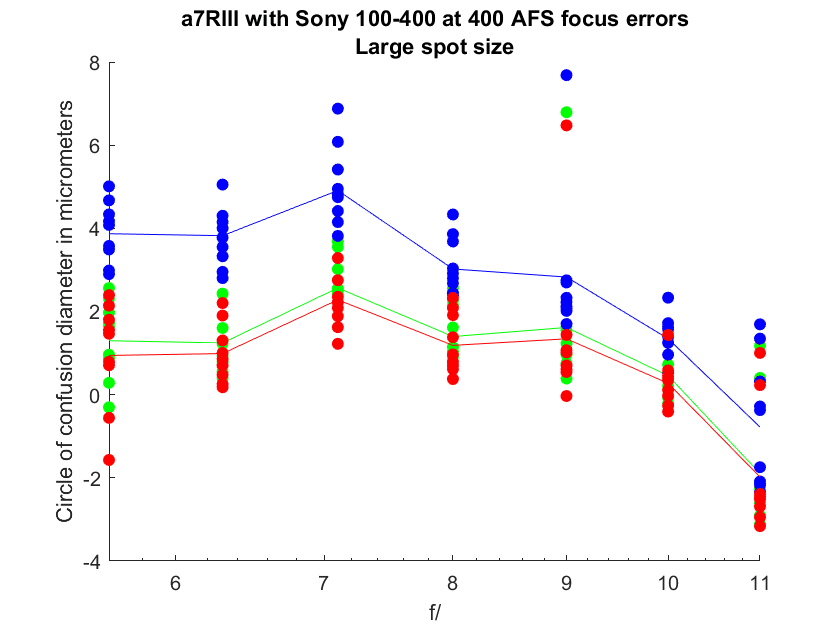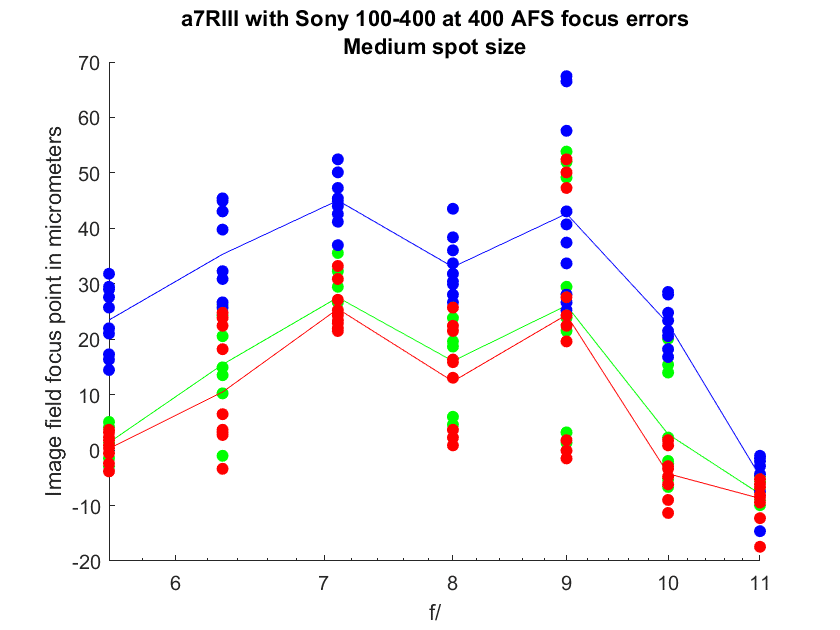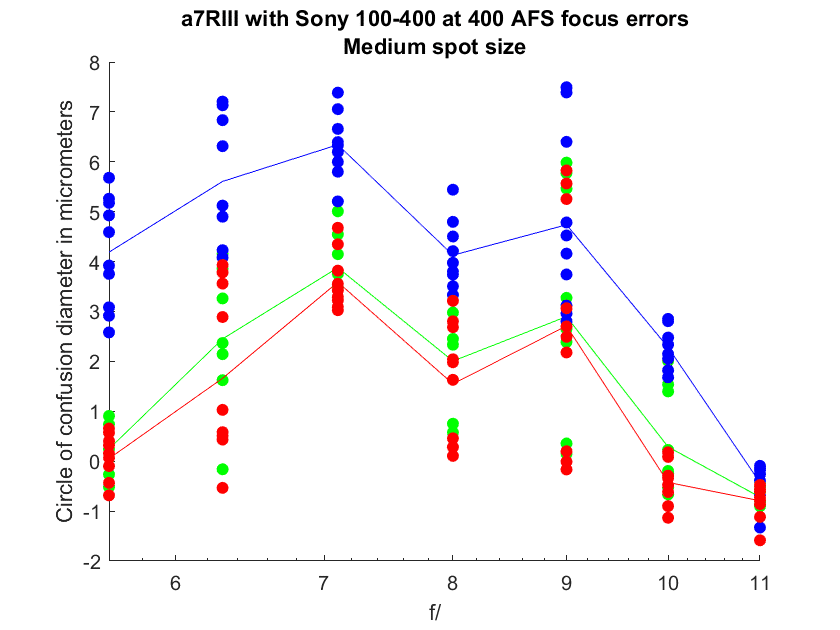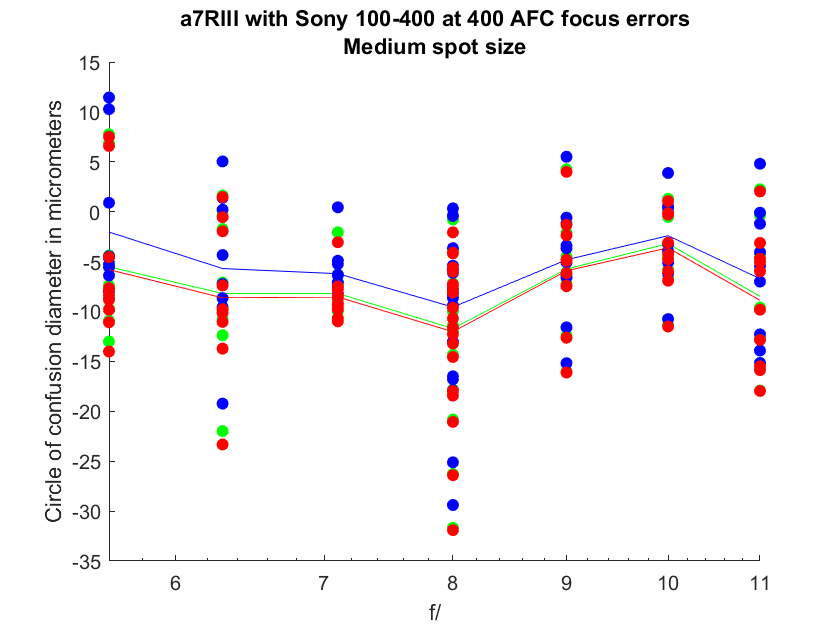This is a continuation of a series of posts on the Sony a7RIII. You should be able to find all the posts about that camera in the Category List on the right sidebar, below the Articles widget. There’s a drop-down menu there that you can use to get to all the posts in this series; just look for “a7RIII”.
I’ve gotten some questions about how the a7RIII’s AF-S does with the large spot size, and there have been reports that AF-C is more consistent with large spot size. Now that I have my long ramp setup, I can find out. I set up the Sony 100-400 mm and set the focal length to 400 mm. I made a series of 10 exposures at f/5.6 through f/11 at 1/3 stop intervals at a distance of 6.8 meters. At that distance, the ramp occupied most of the height of the frame. This made for much slower number crunching, forcing me to take several hours to recode my analysis software for parallelism. When that was done, here’s what I got for the large spot size, with AF-S on, AF release priority, flexible spot, and Setting Effect on.
The dots are the samples, for each Adobe RGB color plane, with 10 shots per f-stop. The lines are the averages for all ten shots. Negative numbers indicate front-focusing. The image-plane shift is in micrometers (um). The blue focus locations are separated from the red and green ones because of the longitudinal chromatic aberration (LoCA) of the lens. Except for the LoCA, that looks great. Here are the circles of confusion (CoC) implied by those focal plane errors:
You can’t beat that. The lens is focusing to within one pixel spacing.
With the medium spot:
And the CoCs:
Very nice.
Small spot size:
In this case, the spot size doesn’t appear to make much difference. And this lens is focusing fantastically well at this focal length.
Switching to AF-C (also with AF priority), and back to the large spot size:
The lens now has a tendency to front-focus, and the sample spreads are greater than with AF-S. With AF-S, the lens on average back-focused as you start to stop it down. With AF-C, the focus just moves slightly forward as you stop down.
The CoCs:
Average CoC diameter is between one and two pixel pitches. This is probably plenty good enough for action. There are plenty of samples that are much worse than that, though.
Now medium spot size:
Not dramatically wore than large spot size. The f/8 dataset has 20 samples.
CoCs:
Same front bias. About the same scatter.
Before we give the a7RIII credit for correcting focus shift, we need to find out how much the lens has:
The answer is the lens has hardly any focus shift at that focal length. So the credit for the great AF performance variation with aperture goes to the lens.












Leave a Reply